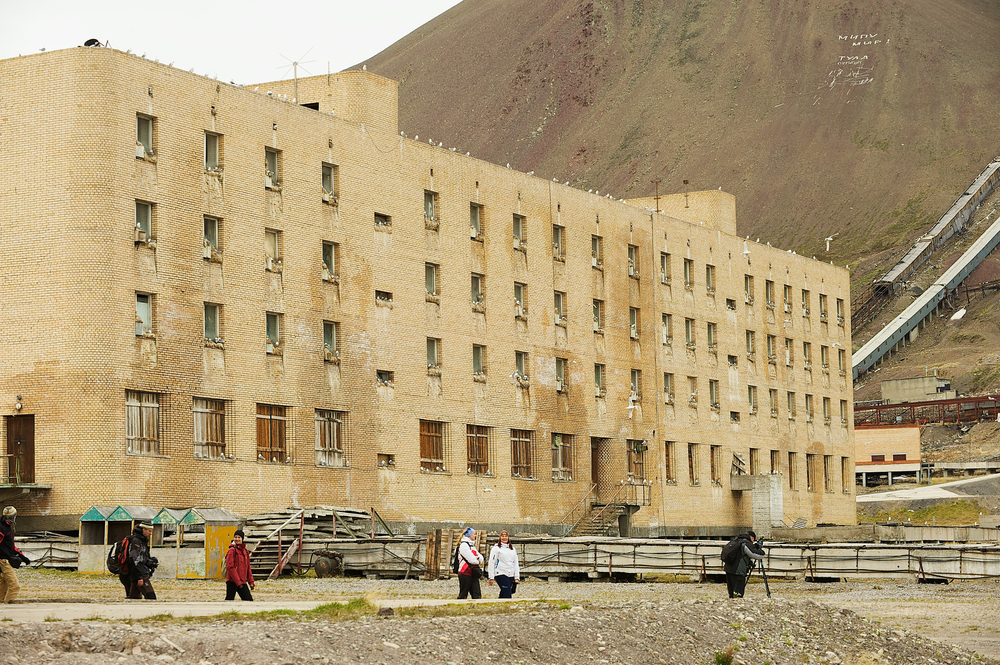Nothing creates more travel anxiety than figuring out when to tip – and how much. Easy enough at home, it becomes a bewildering maze when abroad, where the same action might be seen as either generous or downright insulting depending on where you are. These unwritten rules vary greatly across cultures, based on indigenous economies, social norms, and historical foundations that most visitors never fully grasp.
Here are 20 tipping customs from around the world that could save you from your next international payment embarrassment.
United States

The American approach to tipping isn’t just a custom – it’s practically a shadow wage system. Servers often earn as little as $2.13 hourly because laws assume customers will provide the rest through tips. Anything below 15% at restaurants signals dissatisfaction, while 20% has become the new normal in major cities.
This expectation doesn’t stop at food, either. From hotel housekeepers to taxi drivers, hairdressers to baristas – the hand remains perpetually out, making America perhaps the most exhaustively tip-driven economy anywhere.
Japan

Try leaving extra yen on a Tokyo restaurant table and watch what happens. The server will likely chase you down the street to return your ‘forgotten’ money! In Japanese culture, exceptional service comes as standard—not as something requiring additional payment.
Attempting to tip can actually convey that you think the worker isn’t properly compensated or respected by their employer—a genuine insult rather than the appreciation you intended. This no-tip philosophy spans virtually all service sectors throughout Japan, reflecting deeply held values about professional pride.
Like Travel Pug’s content? Follow us on MSN.
Spain

Spaniards don’t bother with complicated percentage calculations – they simply round up or toss spare change as a symbolic acknowledgment. A café bill of €3.50 might become €4, while a decent restaurant meal might warrant just a €2-3 addition regardless of the total.
This casual approach reflects Spain’s system where service staff receive actual living wages – unlike American workers who depend desperately on each night’s tips. The Spanish ‘propina’ functions more as a token of thanks rather than someone’s rent money.
China

Trying to figure out Chinese tipping practices? Good luck – because they change neighborhood by neighborhood in major cities!
Traditional Chinese establishments generally expect zero tips – much like Japan. Yet, when you walk a few blocks to internationally owned hotels or Westernized restaurants, especially in Shanghai or Beijing, gratuities seem to be welcome. This creates a frustrating dual system where the appropriateness of tipping shifts dramatically depending on establishment type rather than service quality – forcing visitors to recalibrate their payment behaviors constantly.
Australia

Australia traditionally existed as a tip-free paradise thanks to proper minimum wages – around AU$20/hour for adults. Yet recent years have seen American-style tipping culture creeping into higher-end establishments, creating multi-speed expectations.
Young servers in trendy Melbourne restaurants might appreciate an added 10% for outstanding service – while old-school pubs in rural towns might look at the same gesture with confusion. This generational shift reflects both international influences and changing attitudes toward service work.
Like Travel Pug’s content? Follow us on MSN.
United Arab Emirates

Dubai presents visitors with a mathematical puzzle – the bill already includes a 10% service charge, yet additional tipping remains mysteriously expected. Why? Because that official service charge rarely reaches actual servers!
This creates an awkward system where, technically, you’ve already paid for service – but reality demands more. The expectations shift dramatically between emirates, too, with tourist zones developing more aggressive tipping cultures than local establishments. The result leaves many visitors feeling nickel-and-dimed through effectively paying twice.
France

‘Service compris’ – those two words on French bills tell you that 15% has already been incorporated into the advertised price by law. Yet small additional tips remain appreciated, creating subtle social pressure despite the technical inclusion.
French tipping culture emphasizes modesty; leaving a few euros or rounding up shows appreciation without the American-style mathematical calculations. This system reflects broader French values around professional dignity – where service work represents a legitimate career path rather than merely temporary employment.
South Africa

Few places demonstrate tipping’s economic inequality quite like South Africa. Restaurant servers often earn desperately low base wages—sometimes under R20 (roughly $1.20) hourly—making the standard 10-15% gratuity not optional but essential.
Many servers support extended families primarily through tips, creating a troubling system where workers’ basic needs depend entirely on visitor generosity. This dependency grows even more pronounced in tourist-heavy regions like Cape Town, where servers must navigate cultural differences in tipping expectations while relying completely on these unpredictable contributions.
Like Travel Pug’s content? Follow us on MSN.
Iceland

Iceland stands as perhaps the world’s most refreshingly straightforward tipping environment – because it doesn’t have one. The sticker price actually means something here! Restaurant bills, hotel services, tour guides – none expect additional payment beyond what’s clearly stated.
This transparency extends across all sectors, from budget to luxury experiences, reflecting Iceland’s robust social systems that ensure service workers receive fair compensation without customer subsidization. When your Blue Lagoon massage costs 13,000 krona, that’s precisely what you’ll pay.
Mexico

Cross into Mexico, and suddenly, your tipping obligations depend not on service quality but on who else eats around you. Tourist-zone restaurants within view of cruise ships might expect nearly American-level 15-20% gratuities, while local spots serving identical foods just blocks away operate with more modest 10% expectations.
This creates parallel tipping economies within the same city – one for visitors and another for locals. Smart travelers learn to navigate both systems, adjusting behavior based on establishment type rather than applying consistent standards.
Italy

Italian restaurant bills often feature a mysterious ‘coperto’ charge that countless tourists mistakenly believe covers service. Wrong! This traditional fee merely compensates for bread and table settings – not the server’s work.
Italians typically leave additional small amounts despite the already-added coperto, though expectations vary dramatically by region. Venice and Rome’s restaurants eagerly await tourist gratuities, while rural trattorias might seem genuinely surprised by anything beyond small change.
This regional inconsistency leaves many visitors perpetually uncertain about proper tipping protocol.
Like Travel Pug’s content? Follow us on MSN.
India

India maintains what might be the world’s most dramatic tipping dichotomy based solely on establishment type. Step into any five-star Delhi hotel, and you’ll encounter expectations for 10-15% tips despite service charges often already included on bills.
Yet, walk a few streets to local restaurants where servers might receive anything from small rounded-up amounts to nothing additional at all. This division creates a segregated system where visitors must constantly adjust tipping behavior based entirely on venue category rather than service quality, essentially operating in parallel economic systems.
Sweden

Sweden builds service compensation directly into advertised prices, creating refreshing transparency across virtually all sectors. Restaurant bills already incorporate fair server wages, though Swedes occasionally round up slightly for truly exceptional experiences.
This straightforward approach reflects broader Scandinavian values around equality and clarity, ensuring service workers receive consistent income regardless of customer background or tipping knowledge.
The system creates remarkably stress-free payment experiences compared to countries with complex unwritten tipping rules.
Thailand

Thailand presents a gradually evolving tipping landscape, with traditional no-tip customs increasingly accommodating international visitors’ habits, creating a system in constant flux. Upscale Bangkok restaurants often add 10% service charges while still appreciating small additional amounts, yet street food vendors and local establishments operate entirely without tipping expectations.
Thai culture emphasizes that any gratuities should remain modest and understated rather than flashy, with small amounts viewed more favorably than excessive overpayment that might create uncomfortable status distinctions between the giver and the receiver.
Like Travel Pug’s content? Follow us on MSN.
Brazil

Brazilian restaurant bills feature a curious approach – a 10% service charge line item that remains technically optional despite appearing as standard. Most locals pay this suggested amount without question for adequate service, removing it only to signal serious dissatisfaction with the experience.
This creates an interesting middle ground between mandatory American-style tipping and no-tipping cultures, providing theoretical customer choice within strong social expectations to include the standard amount unless the service is genuinely problematic.
Germany

Germans employ a distinctive approach where tips get communicated verbally during payment rather than left anonymously on tables afterward. When settling a €23.50 bill, customers typically hand over €25-28 while saying ‘stimmt so’ (keep the change) or stating the total amount they wish to pay.
This direct verbal component creates explicit acknowledgment between customer and server that many Germans consider more respectful than leaving money on tables after leaving, reflecting cultural preferences for clear communication over implied messages.
South Korea

South Korea demonstrates how quickly tipping cultures can evolve, with traditional no-tip practices increasingly challenged by younger Koreans with international experience. Older generations still consider tipping unnecessary or potentially offensive, while younger servers in Seoul’s trendier districts increasingly appreciate small gratuities.
This generational transition creates particularly challenging navigation for visitors, whose appropriate tipping behavior might change based on both the establishment type and the age of the staff serving them, reflecting a society in cultural transition around service compensation.
Like Travel Pug’s content? Follow us on MSN.
Canada

Canada largely mirrors American tipping practices despite having significantly higher minimum wages for service workers, creating a somewhat puzzling continuation of dependency on customer supplements. Restaurant servers anticipate 15-20% gratuities just like their southern neighbors, with similar expectations extending across service sectors.
The meaningful difference appears more in attitude than amount, with Canadian servers generally expressing less entitlement regarding specific percentages while still relying heavily on tips for their livelihood in a system that has resisted European-style service-included reforms.
Russia

Russians take a remarkably calculated approach to tipping that correlates more directly with specific service elements than many other cultures. The standard 10% restaurant gratuity increases or decreases based on particular aspects of the experience, with Russians more likely to leave precisely calculated amounts rather than simply rounding figures.
This analytical approach extends beyond restaurants to other service sectors, with tips viewed as performance assessment rather than social obligation, creating a system where gratuities more accurately reflect service quality than in countries where standard percentages prevail regardless of experience.
Argentina

Argentina maintains among Latin America’s most moderate and consistent tipping cultures, with 10% considered appropriate across most service industries regardless of establishment quality or bill amount. This straightforward approach applies uniformly throughout the country rather than varying between tourist zones and local establishments.
The Argentine propina reflects appreciation rather than obligation, with service workers generally receiving living wages independent of tips while still welcoming the supplemental income that reasonable gratuities provide across the hospitality sector.
Like Travel Pug’s content? Follow us on MSN.
The Balancing Act of Global Gratuities

World traveling requires more than mastering percentages for tipping; it involves mastering the economic and social messages your money sends in each foreign place. What is perfect in Bangkok will be deeply offensive in Tokyo, and American customs look either stingy or extravagant, depending on where you’ve landed.
Perhaps the most prized travel skill is flexibility—noticing how the people around you behave, asking hotel staff or trusted residents about contemporary practices, and remembering that these patterns always evolve. With distinctions between global tipping cultures fading over travel and electronic payment systems, perhaps the wisest approach is balanced research, sensitivity to culture, and decent respect for those who tend to you, regardless of local standards.
More from Travel Pug

- 20 Destinations That Were Once Thriving but Are Now Quietly Disappearing
- 15 Hidden Spots in Disney World’s Magic Kingdom Most Visitors Miss
- 20 Once-Popular Beach Towns That Are Now Ghostly Empty
- 20 Beautiful US Lakefront Towns Where You Can Live for Under $2000 a Month
- 20 Caribbean Islands That Are Safer Than People Think
Like Travel Pug’s content? Follow us on MSN.
